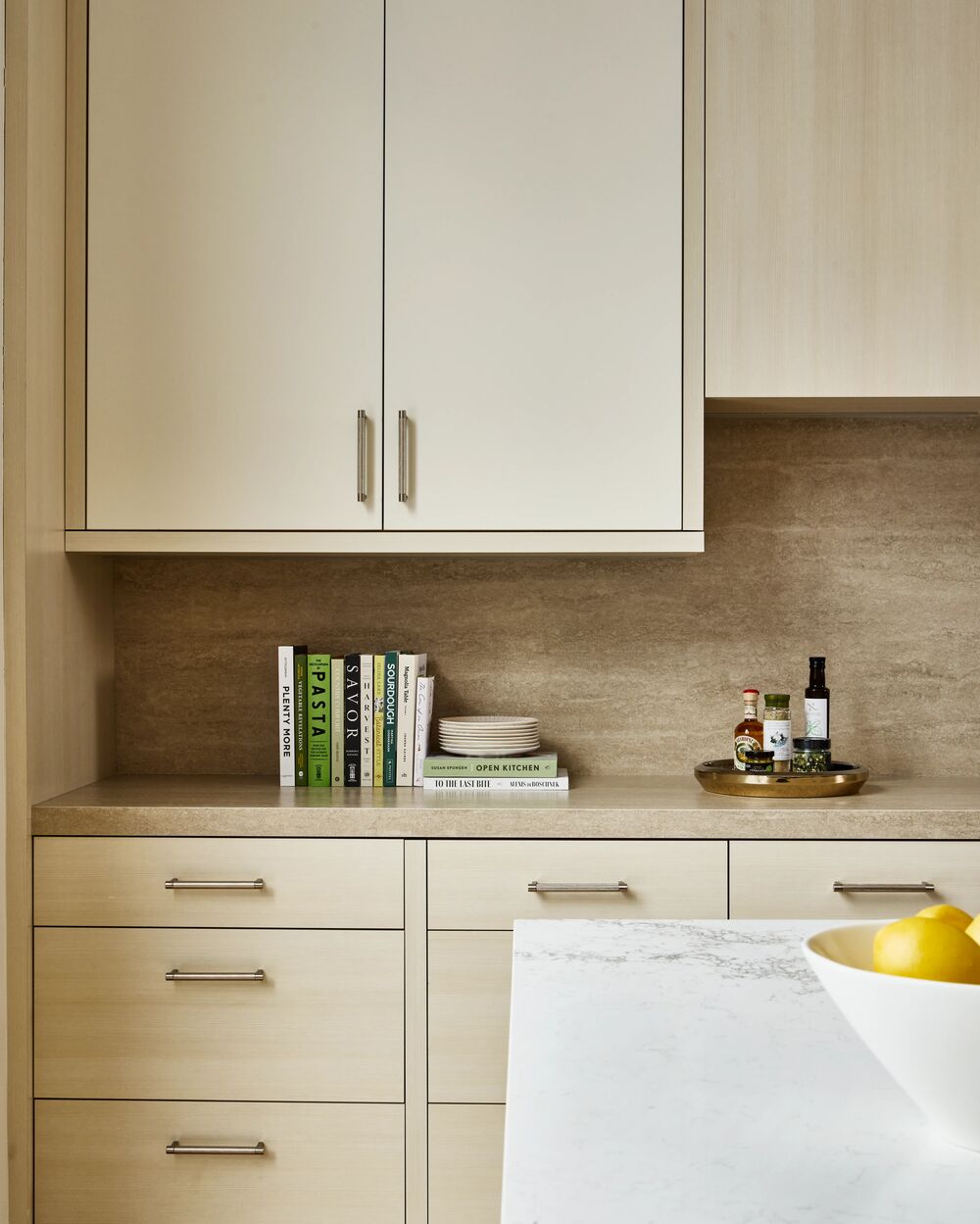
A well-designed kitchen isn’t just about sleek cabinetry and polished countertops. It’s about layers of texture, warmth, and contrast. The modern way to design a kitchen embraces a mix of materials, combining natural elements with contemporary finishes. The result? A space that feels both sophisticated and inviting. Whether you’re planning a full renovation or a simple refresh, these tips will help you mix materials for a stylish, functional kitchen.
Choose a Statement Element
Start by selecting a standout feature to ground your design. This could be a fluted island, striking countertops, or a bold cabinet finish. In a contemporary kitchen with warm details, a curved island painted in a rich olive tone becomes a focal point. It’s especially eye-catching when accented with a creamy white quartz countertop featuring soft grey veining. If you love the idea of incorporating colour but want something timeless, deep greens and warm neutrals are great choices. They feel both modern and enduring.
Layer Your Cabinet Finishes
A kitchen with a mix of cabinetry materials adds depth and interest. Instead of matching all your cabinets, consider pairing painted lacquer with a warm wood look. Creamy lacquered cabinets feel sleek and contemporary, while oak-look wood brings in a natural, grounding element. This approach is especially important in modern kitchens with minimal detailing. When cabinet design is simple and streamlined, mixing materials adds dimension and visual intrigue. Without it, the space can feel flat.
Mix Countertop and Backsplash Materials
Gone are the days when every surface in the kitchen matched perfectly. A layered look feels fresh and considered. The key is choosing complementary materials for countertops and backsplashes. A combination of quartz on the island and travertine-look porcelain on the perimeter surfaces works beautifully. It creates a mix of tones and textures that enhances the kitchen’s richness. Natural stone-inspired materials like these offer durability while bringing in an organic, lived-in feel.

Use Pattern to Add Interest
Pattern isn’t just for wallpaper and textiles. It can come into play in your kitchen flooring. A herringbone oak floor is a great way to introduce subtle movement and visual texture. The kitchen is an ideal space for this type of flooring. Unlike a living room or bedroom, it remains uncovered, allowing the pattern to take centre stage. A warm wood tone in a herringbone pattern adds timeless character and contrasts beautifully with contemporary cabinetry.
Embrace Soft, Organic Shapes
Curves are making a big impact in contemporary kitchen design. Incorporating rounded elements, like a curved island with fluted detailing, brings softness to the space. It contrasts beautifully with the straight lines of cabinetry and countertops. If a curved island isn’t in the plans, introduce this trend through rounded pendant lighting, sculptural bar stools, or an arched doorway. Small details can make a big difference.
Create a Balanced Look
With so many materials in play, maintaining cohesion is key. Stick to a palette of three to four main materials. Ensure they share a common undertone—whether warm, cool, or neutral. Repeating elements, such as carrying the oak tone from the flooring into shelving or trim, helps tie everything together. These small connections make the design feel intentional.
Mixing materials brings depth, warmth, and personality to a modern kitchen. Combine different cabinet finishes, layer countertop materials, and mix tones and textures for a stylish look. A warm wood floor, a fluted island, or a veined countertop can add character. The best kitchens embrace contrast and feel both modern and inviting.
Photography by Stacey Brandford